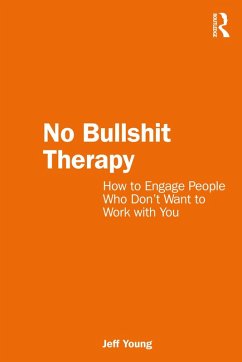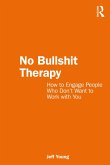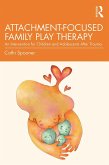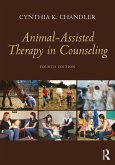Then No Bullshit Therapy (NBT) is for you! Most simply, NBT is about being authentic.
Many people are cajoled, pressured, or mandated to see therapists, counsellors, and other helpers. Hence, they are reluctant, suspicious, and resistant to being helped. This puts professionals in the difficult position of trying to help someone who does not want to be helped. To make things worse, there are few practice models designed to engage people who don't want to be engaged.
NBT creates a context for mutual honesty and directness in working relationships. Creating a context for mutual honesty and directness can be refreshingly effective, especially with people who are suspicious of counselling or distrustful of the counsellor. When combined with warmth and care, honesty and directness can enhance co-operation, connection, and trust, especially if the practitioner avoids jargon and acknowledges constraints to the work. NBT is ideal for working with people who:
- Don't like therapy or the idea of therapy (even if they've never had it)
- Don't trust warm fuzzy "do-gooders" or "psychologisers"
- Are suspicious of services because they have experienced trauma and have had abusive institutional experiences or unsatisfactory treatment in the past
- Don't see themselves as a client, don't agree with the referrer's description of them or their problems, and appear to not want to change
Practical and engaging, this book is an essential guide for therapists, counsellors, and other allied-health professionals who are looking for a more effective way to connect with reluctant clients and ensure they get the support they need. It may also help you create more robust relationships at work and at home.
Dieser Download kann aus rechtlichen Gründen nur mit Rechnungsadresse in A, B, BG, CY, CZ, D, DK, EW, E, FIN, F, GR, HR, H, IRL, I, LT, L, LR, M, NL, PL, P, R, S, SLO, SK ausgeliefert werden.
Michael F. Hoyt, Ph.D (USA). Author of Brief Therapy and Beyond: Stories, Language, Love, Hope, and Time and Brief Therapy Conversations: Exploring Efficient Intervention in Psychotherapy (with Flavio Cannistrà).
"This book is not just for therapists trying to work with clients who hate the idea of therapy. It is for all of us who have ever avoided that difficult conversation we know we should have. Jeff Young guides us through the philosophy and practice of NBT, with detailed client transcripts, all exuding his own particular combination of warmth and honesty."
Pam Rycroft, MPsych. (Australia). Co-editor of Single-Session Thinking and Practice in Global, Cultural, and Familial Contexts: Expanding Applications.
"Jeff Young's work on 'No Bullshit Therapy' is, in my view, one of the most important developments in the field of therapy since Single-Session Therapy came onto the scene towards the end of the last century. In fact, the combination of these developments increases the potency of both. Mandatory reading if you have to work with mandated clients...and if you don't".
Windy Dryden, Ph.D (UK). Emeritus Professor of Psychotherapeutic Studies, Goldsmiths University of London, UK.
Michael F. Hoyt, Ph.D (USA). Author of Brief Therapy and Beyond: Stories, Language, Love, Hope, and Time and Brief Therapy Conversations: Exploring Efficient Intervention in Psychotherapy (with Flavio Cannistrà).
"This book is not just for therapists trying to work with clients who hate the idea of therapy. It is for all of us who have ever avoided that difficult conversation we know we should have. Jeff Young guides us through the philosophy and practice of NBT, with detailed client transcripts, all exuding his own particular combination of warmth and honesty."
Pam Rycroft, MPsych. (Australia). Co-editor of Single-Session Thinking and Practice in Global, Cultural, and Familial Contexts: Expanding Applications.
"Jeff Young's work on 'No Bullshit Therapy' is, in my view, one of the most important developments in the field of therapy since Single-Session Therapy came onto the scene towards the end of the last century. In fact, the combination of these developments increases the potency of both. Mandatory reading if you have to work with mandated clients...and if you don't".
Windy Dryden, Ph.D (UK). Emeritus Professor of Psychotherapeutic Studies, Goldsmiths University of London, UK.









